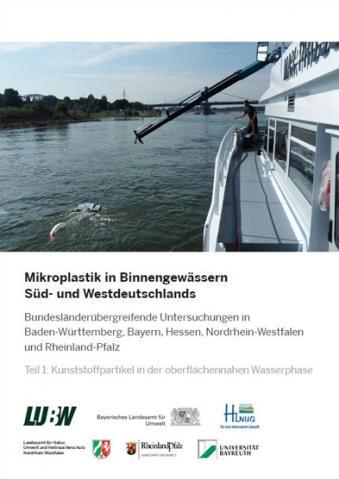Mikroplastik in Binnengewässern Süd- und Westdeutschlands
Mikroplastik in Binnengewässern Süd- und Westdeutschlands
Between 2014 and 2017, a research group at the University of Bayreuth led by Prof. Dr. Christian Laforsch gathered and analysed water samples from 22 rivers, mainly in the catchment area of the Rhein and Donau (Danube) rivers. The new findings now represent one of the world's largest data sets from standardized studies on the appearance of plastic particles in rivers.
The study was commissioned by the German states of Baden-Württemberg, Bavaria, Hesse, North Rhine-Westphalia, and Rhineland-Palatinate.
The 52 water samples under examination were taken from regions in southern and western Germany that varied greatly with respect to landscape, settlement, and industrial density. The researchers in Bayreuth found and analysed more than 19,000 objects in these samples of which 4,335 were unambiguously identified as plastic particles.
Around 99 percent of these plastic particles are smaller than 5 millimetres and are thus classified as microplastics. Tiny particles with a diameter of 0.02 - 0.3 millimetres (20 - 300 micrometers) are the most common: they account for 62 percent of the plastic particles that were found. What is striking is that higher concentrations of microplastics tend to be found in small and medium-sized tributaries. Only low to medium concentration levels were measured in the Rhein, the largest body of water studied.
Polyethylene and polypropylene are the types of plastic that have the highest market share in Europe. Unsurprisingly, the majority of particles analysed were also made of these types of plastics. The irregular, fragmentary appearance of most particles suggest that they are fragments of larger plastic objects. In addition, plastic fibres were discovered at many sampling sites. Other forms of particles such as foil remnants, beads, or pellets were not discovered as often.
(section of a press release by Universität Bayreuth)
Heß, Maren; Diehl, Peter, Mayer, Jens; Rehm, Harald; Reifenhäuser, Werner; Stark , Jochen; Schweiger, Julia (2018): Mikroplastik in Binnengewässern Süd- und Westdeutschlands Bundesländerübergreifende Untersuchungen in Baden-Württemberg, Bayern, Hessen, Nordrhein-Westfalen und Rheinland-Pfalz. Teil 1: Kunststoffpartikel in der oberflächennahen Wasserphase. Karlsruhe, Augsburg, Wiesbaden, Recklinghausen, Mainz.

